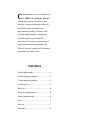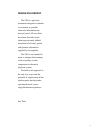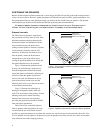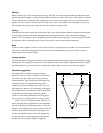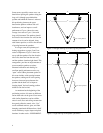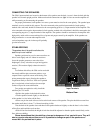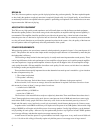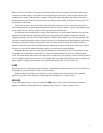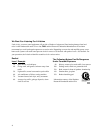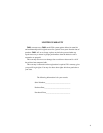
4
Some rooms, especially narrow ones, can
benefit from placing the speakers along the
long wall. Although space behind the
speaker and behind the listener is reduced,
this positioning increases the space
between the speakers without side wall
interference, and can improve overall
performance. Figure 4 shows the same
average size room as Figure 3, but with
long wall placement. The speakers should
be at least a foot from the rear wall, but the
amount of toe-in can be adjusted, along
with listener position, as well as the amount
of spacing between the speakers.
In a larger room, the optimum posi-
tioning suggestions on pages 2 and 3 are
easier to implement. Figure 5 shows one
set-up with the speakers five feet from the
side walls, three feet from the rear wall,
and the speakers aimed straight ahead. This
arrangement provides an ample amount of
space around the speakers to reduce
unwanted reflections and should give
excellent spatial performance and a very
“open” sound. Other placement options in
this room include: wider spacing between
the speakers, adding toe-in as the spacing
increases; increased space between the
speaker and the back wall to improve
imaging depth. Various listening position
distances can also be tried.
As mentioned at the beginning of the
positioning section, all rooms are different
and no hard rules can be given. Even rooms
with similar dimensions can have differ-
ences in wall, floor and ceiling construction
that greatly affect the sound. Also, “live”
rooms with hard surfaces, glass, and little
damping sound much different from “dead”
rooms with heavy carpet, drapes and plush
furniture. In other words—EXPERIMENT.
Figure 5. Large listening room speaker placement
Figure 4. Average listening room with long wall placement
8'
3'
5'
12'
8'
5'
3'
18'
25'
8-12' Listening Distance
1'
8'
1'
18'
14'
8-10 ' Listening Distance
10'
10'
4'
4'




